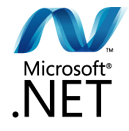Microsoft has announced that they will release .NET 5 after .NET Core 3.0. This will be one of the major .NET launches and is likely to draw a lot of attention. Post-release there will be just one .NET and it can be used to target Windows, Linux, macOS, iOS, Android, tvOS, watchOS, and web assembly. Microsoft has promised that they will launch new .NET API’s along with language features.

Microsoft has added fifty thousand .NET Framework APIs to the platform. .NET 5 is the highest version and is indicative of the future of the .NET platform.
.NET 5 = .NET Core vNext
Microsoft has promised that the .NET5 will improve the .NET offering in the following ways-
- Produce a single .NET runtime and framework that can be used everywhere, and that has uniform runtime behaviors and developer experiences.
- Expand the capabilities of .NET by taking the best of .NET Core, .NET Framework, Xamarin, and Mono.
- Build that product out of a single code-base that developers (Microsoft and the community) can work on and expand together and that improves all scenarios.
That apart, .NET will also offer Just-in-Time (JIT) and Ahead-of-Time (AOT) compilation models. AOT is aimed at mobile and IoT devices, thanks to its small footprint. As explained earlier the .NET will be based on a unified toolchain and will be aided by a flexible deployment model. That being said the features from the older versions would be retained.
Below is the list of all the new features .NET will bring to the table.
- You will have more choice on runtime experiences (more on that below).
- Java interoperability will be available on all platforms.
- Objective-C and Swift interoperability will be supported on multiple operating systems.
- CoreFX will be extended to support static compilation of .NET (ahead-of-time – AOT), smaller footprints and support for more operating systems.
You can read the announcement on microsoft.com.
Leave a Reply